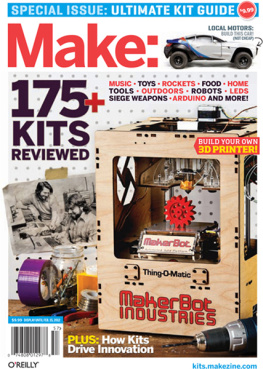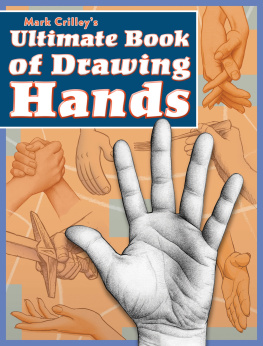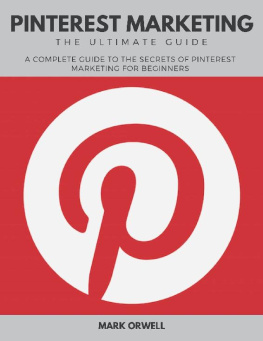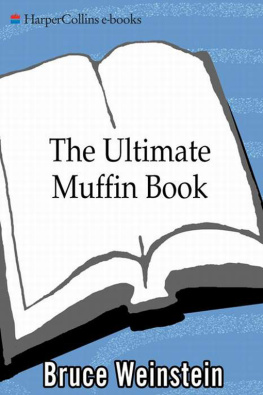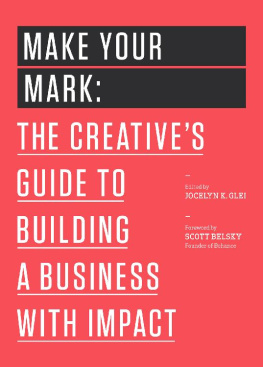Mark Frauenfelder - Make: Ultimate Kit Guide
Here you can read online Mark Frauenfelder - Make: Ultimate Kit Guide full text of the book (entire story) in english for free. Download pdf and epub, get meaning, cover and reviews about this ebook. year: 2011, publisher: O’Reilly Media, genre: Home and family. Description of the work, (preface) as well as reviews are available. Best literature library LitArk.com created for fans of good reading and offers a wide selection of genres:
Romance novel
Science fiction
Adventure
Detective
Science
History
Home and family
Prose
Art
Politics
Computer
Non-fiction
Religion
Business
Children
Humor
Choose a favorite category and find really read worthwhile books. Enjoy immersion in the world of imagination, feel the emotions of the characters or learn something new for yourself, make an fascinating discovery.
- Book:Make: Ultimate Kit Guide
- Author:
- Publisher:O’Reilly Media
- Genre:
- Year:2011
- Rating:3 / 5
- Favourites:Add to favourites
- Your mark:
- 60
- 1
- 2
- 3
- 4
- 5
Make: Ultimate Kit Guide: summary, description and annotation
We offer to read an annotation, description, summary or preface (depends on what the author of the book "Make: Ultimate Kit Guide" wrote himself). If you haven't found the necessary information about the book — write in the comments, we will try to find it.
Make: Ultimate Kit Guide — read online for free the complete book (whole text) full work
Below is the text of the book, divided by pages. System saving the place of the last page read, allows you to conveniently read the book "Make: Ultimate Kit Guide" online for free, without having to search again every time where you left off. Put a bookmark, and you can go to the page where you finished reading at any time.
Font size:
Interval:
Bookmark:

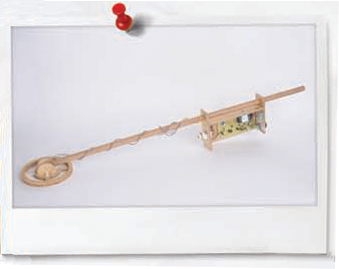
Take a deep breath and imagine that you are on a desert island with buried treasure. (Or if thats a stretch. just imagine that you like to find lost coins, jewelry and other artifacts around town or at the beach.) All that you have to assist you is a shovel, a home workshop and the islands RadioShack store.
How do you find the treasure? You cant see it, and it probably isnt magnetic. so you need to rely on other properties. Most treasure contains solid metal, so you can try to find things that are conductive. The free electrons in a conductor react to and affect a surrounding electromagnetic field, even through the ground. Thats a startso now you need a way of detecting this behavior.
In a simple coil-oscillator circuit, the frequency of the oscillations depends on the coils size and how many turns it has. More turns make current in the coil slower to reverse, lowering the frequency. Moving metal objects close to the coil also lowers the frequency, because it adds more electrons sloshing back and forth in the coils constantly reversing magnetic field.
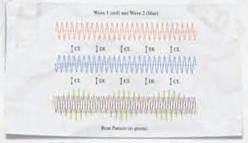
So a coil circuit will change its frequency in close proximity to metal, but the change is usually too small to hear. To make it more obvious, a second oscillator circuit with a manually tunable coil can act as a reference oscillator. Tune the reference to match the detector. Very slight changes in the detector frequency will result in an easily heard beat frequency, as the two tones cyclically reinforce and cancel each other out. (The beat frequency equals the difference between the two frequencies.)
Connect headphones or a speaker, add a handle for moving the detector over the ground, and youre ready to hit the beach in search of treasure.
To make your own treasure finder, you need plywood, a broom handle, some electronic components and a few other easily sourced parts.
By Paul Spinrad & Steve Hobley
See how its made at:
RadioShackDIY.com/TreasureFinder.
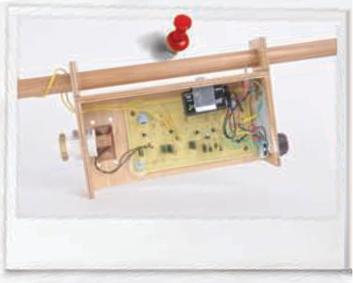
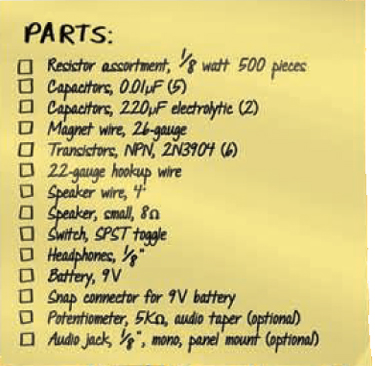

To submit your own creation, explore other great creations and get the hard-to-find parts you need, visit RadioShack.com/DIY
 SCAN THIS QR CODE TO LEARN MORE ABOUT THIS PROJECT
SCAN THIS QR CODE TO LEARN MORE ABOUT THIS PROJECT 

BY KEITH HAMMOND
This special issue of MAKE is all about kits, and the promise behind each kit that you can make something cool. Why?
Kits are the gateway DIY project. Words cant describe the pride a 9-year-old feels when he glues the final piece atop the enormous Apollo Saturn V moon rocket model he built with his dad (Thanks, Dad!) and takes it to show-and-tell at school. I made this!
For many of us, a kit is the first thing we remember making whether Lego or Erector sets (see page 18), needlepoint or paint-by-number, or model planes and cars from Testors and Revell. The excitement can be enough to set us on a path of creative making for life. Who knows what doors youre opening when you put a kit in the hands of a beginner?
Kits teach skills. When you make a kit, somebody has done you a great service designed it, gathered parts, illustrated instructions so you can focus on the good stuff: mastering the skills required to make the thing, and understanding how it works.
Handmade beats store-bought. Pink Snuggie blankets come and go, but Grandmas crocheted afghan is forever. Psychologists call this the Ikea Effect adding our personal labor just makes the thing more valuable.
Making something is more fun than buying it. Kits quick-start the fun.
Kits are exciting and mysterious. If you dont know how to make it from scratch, then the kit is your path into the unknown, to new knowledge thats empowering, maybe even dangerous (just ask Wile E. Coyote about ACME kits).
Like Alices Drink Me bottle or Neos red pill, the kit is a portal to an experience you may or may not be ready for. And if its mysterious to you, imagine how deliciously mystifying it must be to those around you. What is he building in there?
Kits are great for sharing. Kids and parents can build a starter kit on an equally clueless footing, learning together.
Kits open up community. Build a kit and youre joining a group of people whove built it too, and are no doubt trading tips and showing off their builds online. Youre smarter thanks to the pack, and youre meeting makers who share your excitement.
Kits drive innovation. When a kit sells well, suddenly there are people in every town building newfangled TV sets (remember Heathkit? theyre back, see page 24) or aerial Arduino robots (check out DIY Drones, page 26). Like seeds in the wind, those kits switch on thousands of new makers, who become a community of innovators, excited and hungry for more advanced kits and products, in an upward spiral.
MITs Michael Schrage looks into the phenomenon (page 8) and finds that kit-makers have driven the great technology upheavals, from Boulton & Watts steam kits in the Industrial Revolution, to Woz and Jobs Apple I kits in the computer revolution (build a replica, page 41).
I remember my dads excitement building kit computers in the 1970s, little boxes programmed in hex code via a 10-key pad, no video, just 7-segment red LEDs for a readout. A kit in the mail challenged him to build his skills, raised his expectations of computers, and fired his imagination about what could be done with them. Once hed mastered a kit, he wanted the next most advanced kit, and then the first home computers (Apples, Ataris, Commodores), and so on.
Multiply that fired-up kit maker by thousands and youve got a smart, skilled, hungry community experimenting with new technology, and bringing along their friends (and their kids my sibs and I were 10, 11, and 13, programming in BASIC).
History repeats. Today were watching the same innovation explosion unfold in 3D printing, DIY robotics, and microcontrollers, as skilled amateurs build kits and hack them, egg each other on, and teach those around them.
The next Steve Jobs is out there, building kits. 
Keith Hammond is Projects Editor of MAKE. He wanted to be an astronaut.
Tough, yet versatile.
Font size:
Interval:
Bookmark:
Similar books «Make: Ultimate Kit Guide»
Look at similar books to Make: Ultimate Kit Guide. We have selected literature similar in name and meaning in the hope of providing readers with more options to find new, interesting, not yet read works.
Discussion, reviews of the book Make: Ultimate Kit Guide and just readers' own opinions. Leave your comments, write what you think about the work, its meaning or the main characters. Specify what exactly you liked and what you didn't like, and why you think so.

